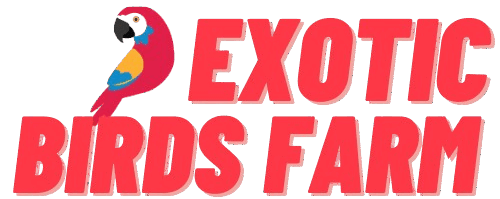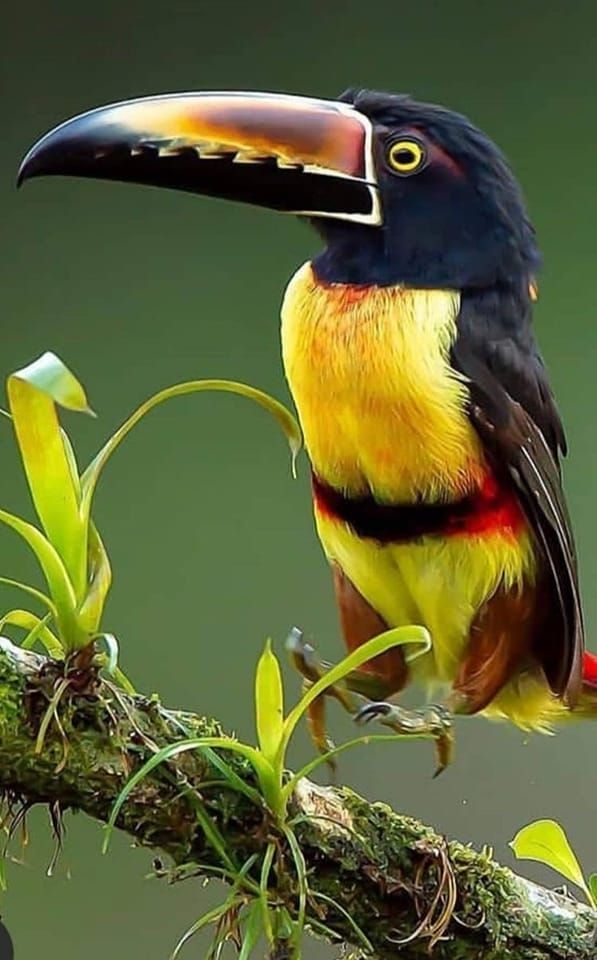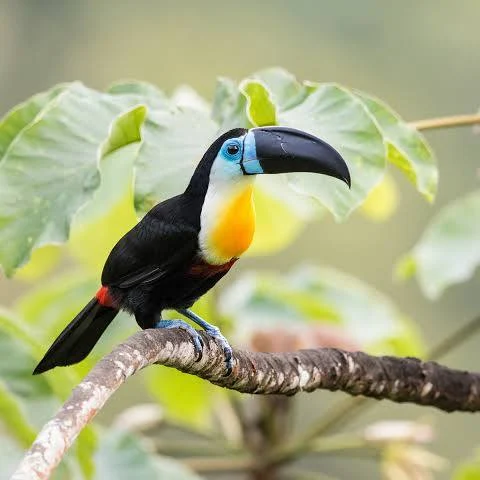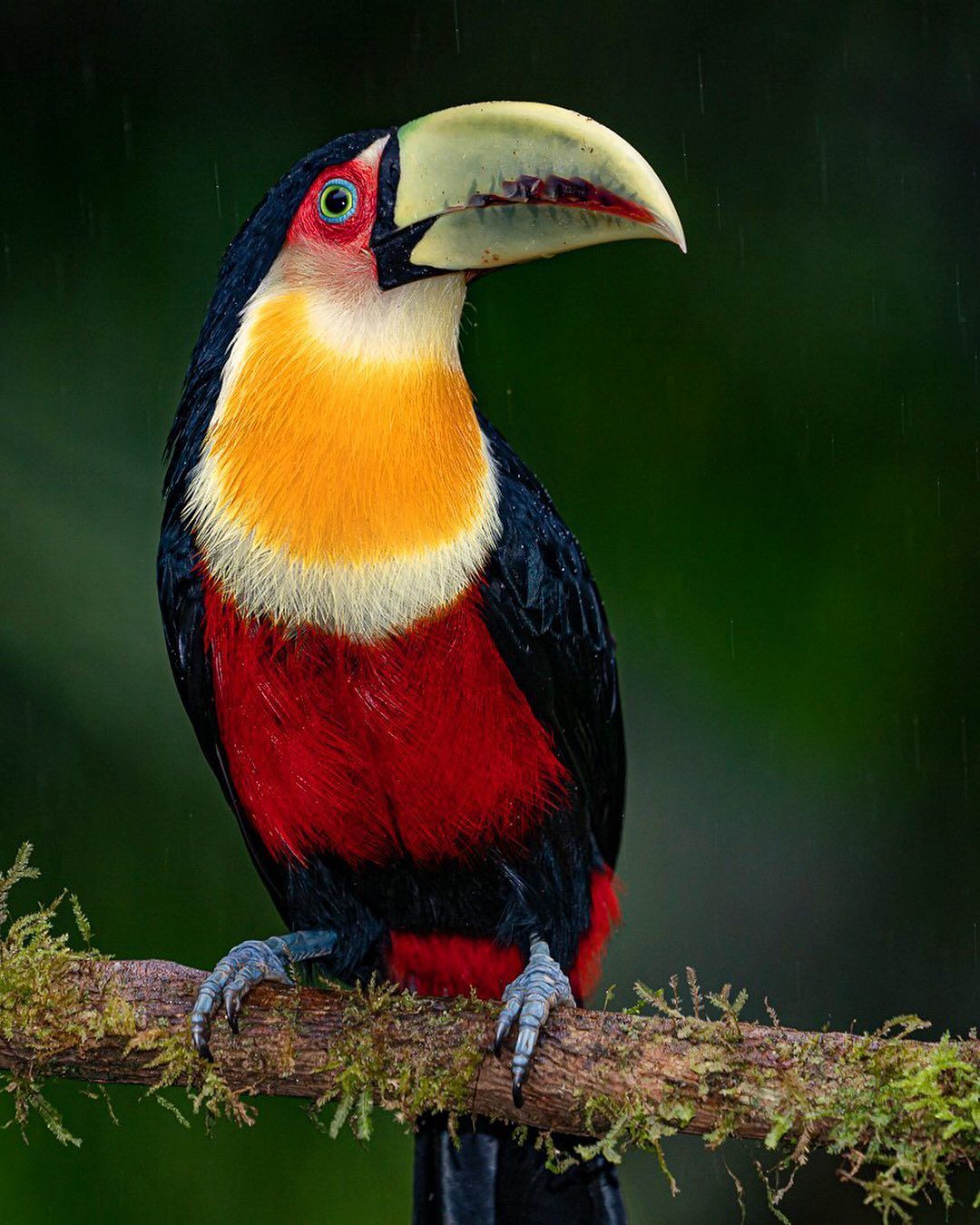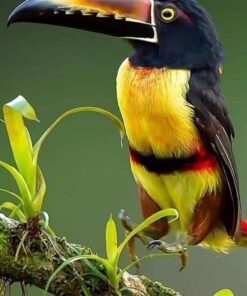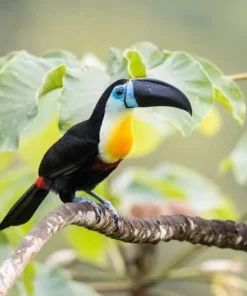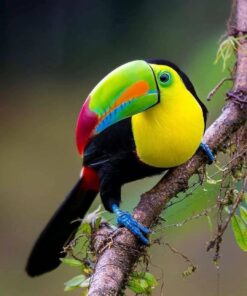Red-breasted Toucan
$1,850.00
Description
The red-breasted toucan is 42 to 48 cm (17 to 19 in) long and weighs 265 to 400 g (9.3 to 14 oz); it is the smallest member of genus Ramphastos. The sexes are alike though the female’s bill is shorter than the male’s. Their bill is mostly green to green-yellow, with a vertical black line at its base, red and ivory tomial “teeth”, and some green striations on the maxilla. Their crown, nape, upperparts, and tail are black but for red uppertail coverts. Their face is yellow with bare red, blue, and yellow-green skin around the eye. Their throat and breast are yellow with a red area within the lower breast. Their belly and undertail coverts are red and their flanks black.
In the southern part of its range the red-breasted toucan moves to lower elevations in the austral winter. After breeding some move from natural forest into plantations.
The red-breasted toucan feeds mostly on fruits, of both native and introduced plants as well as green coffee beans and fruit in orchards. To a lesser extent it also feeds on insects and small birds. It usually forages in pairs and small groups but 20 or more may gather at times. It usually forages in the forest canopy but will pick up fallen fruit from the ground.
The red-breasted toucan breeds between October and February in the southern part of its range and from January to June in the north. Pairs are territorial. Males allopreen and courtship-feed females. The species nests in cavities in both living and dead trees, either those made by natural decay or excavated by woodpeckers, and will enlarge both the entrance hole and the cavity if needed. Typically the bottom of the cavity has a layer of ejested seeds. The few nests studied have ranged from 0.7 to 6.0 m (2 to 20 ft) above the ground. The clutch size is two to four eggs. Both adults incubate the eggs and both provision nestlings. The incubation period is about 16 to 19 days and fledging occurs 40 to 50 days after hatch.
